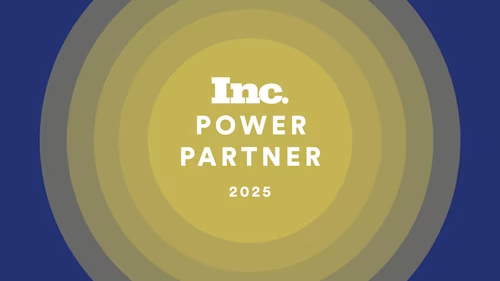
Improving Patient Intake Forms with E-Signature
Manually filling out new patient forms is a barrier to convenience for all involved. Learn how e-signature can improve patient intake forms.

Patient intake forms are one of the first touchpoints a patient has with your organization. They represent an important opportunity to make a positive first impression and lay the groundwork for long-term satisfaction. To keep up with patient expectations for a fast and simple intake process, providers have adopted e-signature technology for new patient forms. This move has been so successful that, according to a recent survey by Docusign, 88% of healthcare respondents believe e-signature is critical to their organization.
E-signature technology’s ability to digitize the entire intake process—including preparing, sending, signing, storing, and managing forms—has made it an indispensable part of countless providers’ workflows. Below we share a few ways in which digitizing patient forms with e-signature can both transform the patient intake experience and reduce the administrative burden on staff.
Digitizing intake forms reduces inconvenience for patients and staff
Patient intake has long been hindered by manual paperwork, causing inefficiencies for patients and staff alike. Before seeing their provider, patients often have to complete time-consuming paper forms, which staff manually enter into the electronic health record (EHR). In addition to wasting money on paper and printing, the labor costs of this process are significant. The average healthcare employee spends over an hour each week on faxing and printing, while 40% spend over 5 hours.
E-signature solutions help eliminate these administrative costs, freeing up your organization’s resources for other priorities and reducing friction when patients arrive for a visit. Instead of manually filling out paperwork in the office, patients have the flexibility to fill out and sign intake forms digitally on a smartphone, tablet or computer—either before their visit or when they arrive. What’s more, the process doesn’t require a patient portal, making it even more convenient. With 77% of healthcare leaders identifying convenience as the biggest priority for customers using their technology, the switch to digital patient intake forms could readily pay off in repeat business and referrals.
Digital forms minimize organizational risk
In the high-regulation, high-compliance healthcare industry, relying on paper forms for some processes is risky as well as time consuming. Hard-copy documents can easily be lost or damaged, making it more difficult for providers to comply with HIPAA standards. An inability to store them in an organized fashion and retrieve them quickly can increase organizational risk. Due to poor storage and retrieval capabilities, 63% of healthcare respondents say their current consent process contains risk.
E-signature technology is effective for addressing these vulnerabilities. Providers can use it to create digital forms that can be filed into the EHR after signing, meaning easier access to patient intake and consent paperwork. Ultimately, e-signature solutions reassure healthcare providers that they can show compliance at a moment’s notice.
Digital forms connect directly to EHRs
Healthcare organizations may have been previously hesitant to adopt digital technologies due to lack of EHR connectivity, but this is changing thanks to robust and modern e-signature solutions. With e-signature technology that can connect to EHRs through APIs with solutions like Infor Cloverleaf, staff no longer have to scan and upload paperwork manually. Patient intake and consent forms will automatically be filed into the patient record after signing, which dramatically increases efficiency and accessibility for providers.
As the rate of adoption increases, e-signature solutions will ease the patient intake experience and the administrative work staff have to shoulder. By eliminating the hassle of paper forms, organizations can dramatically improve the patient experience, increase satisfaction, and boost retention while saving money.
Patient intake form templates with Docusign
Digital patient healthcare forms are effective at improving patient and staff experience because they reduce the time and complexity involved in entering and transferring information. Another advantage to digital forms is the ability to easily create and deploy templates for common forms.
While many patient intake forms share common features, many healthcare facilities require slightly different information. Docusign makes it easy to create your own template for digital forms, so all you need to do is create one digital form that can then be shared with all new patients, signed electronically, and then automatically shared with them and stored for future reference.
To learn more about how Docusign can help improve the patient and staff experience at intake, read about eSignature for Healthcare.
Related posts
Docusign IAM is the agreement platform your business needs



